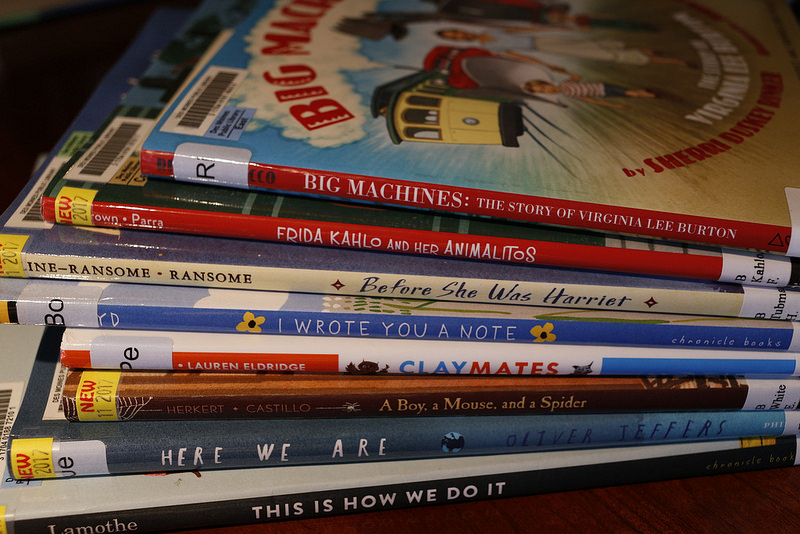Five Guidelines for Choosing Great Picture Books for Second Language Learning

Nothing feels quite like reading a good storybook with your child in your lap.
Our family has a few favorite picture books that are so loved, many dog-eared pages have tape on them, grimy finger smudges on them, and everyone (especially mommy) has the words memorized! For us, its Dr. Seuss ABCs and anything by Richard Scarry.
Our children go back to these books again and again because they want the experience of entering the world of the book through the words and pictures, which usually happens when sitting in the lap of a trusted, loving adult in their life.
Books with a good story and pictures can transport our children to another place or time. Books can also give the child a “Hey, that’s me!” feeling of familiarity when they experience a story about a child like them or activities they do.
And in the case of second language learning, provide a perfect context to introduce phrases, concepts, and vocabulary that wouldn’t otherwise exist in the classroom/home learning setting. Don’t underestimate the power of books for language learning, even if they are not in your target language!
However, not all books are created equal when it comes to using them for second-language learning.
When we plop a book in front our children and the language mama (nurturer/native speaker) begins describing the picture in their language, some of these thoughts can go through our minds:
“Oh no, they’re using too many sentences on just this page.
Is she seeing the details of the illustration, because I’m pretty sure she just called the old lady a girl!
The kids are getting bored and confused. They aren’t noticing any of the vocabulary they already understand.
This book is too complicated. Now that I look at the picture, it has nothing to do with most of the text.
Should I just read it out loud in English first?”
There’s a lot of trial and error involved in finding a good picture book that works for your kids AND second language learning with a language mama (or bilingual parent), but we’ve learned a few tips to quickly and efficiently narrow down the options so choosing a book doesn’t eat up a lot of your language session.
Here’s our guidelines for how to choose books that make great language learning tools for any language.
Simplicity: Clear illustrations and not too many words.
Repetition: Similar themes, concepts and words repeated throughout the book.
Relevance to your child: It’s helpful if the language is meaningful for everyday life. Colors/numbers/shapes and other academic themes don’t need to be the focus. Action words, describing words, location words, everyday routines like bedtime or bath, and common objects/foods/people are great choices. Of course, also pay attention to things your kids love!
Relevance to your language/cultural context: If you know that there are concepts in the book that do not easily translate (e.g., the book “Pancakes for Breakfast” is based around cooking an American recipe that may be unfamiliar), or anything that is offensive (e.g., pigs in a Muslim community), then the book may not be suitable.
Engaging for your child: I love books that are interactive for young kids (e.g., lift the flap) because it keeps them attentive for longer, and because they learn more when they are actively involved and having fun! If the book isn’t naturally interactive, consider adding props or acting it out to make it more fun and memorable for everyone.
I’m sure as you read each point above, a few books from your own library came to mind. Any given book may hit a few of these guidelines, but miss others. The key to choosing a really good book for language is finding one that fits within all five of the guidelines.
If you want a big list of my favorite children’s books which hit most of these points, you’ll find that next on the blog!
If you want to know HOW to use books in language sessions with a Language Mama, we’ll be posting about that soon!
Thanks for reading! I hope next time you have to pick out a book you’ll keep these guidelines in mind and then have a much more solid, productive second language session with your kiddos and Language mama.
Rachel & Alyssa
